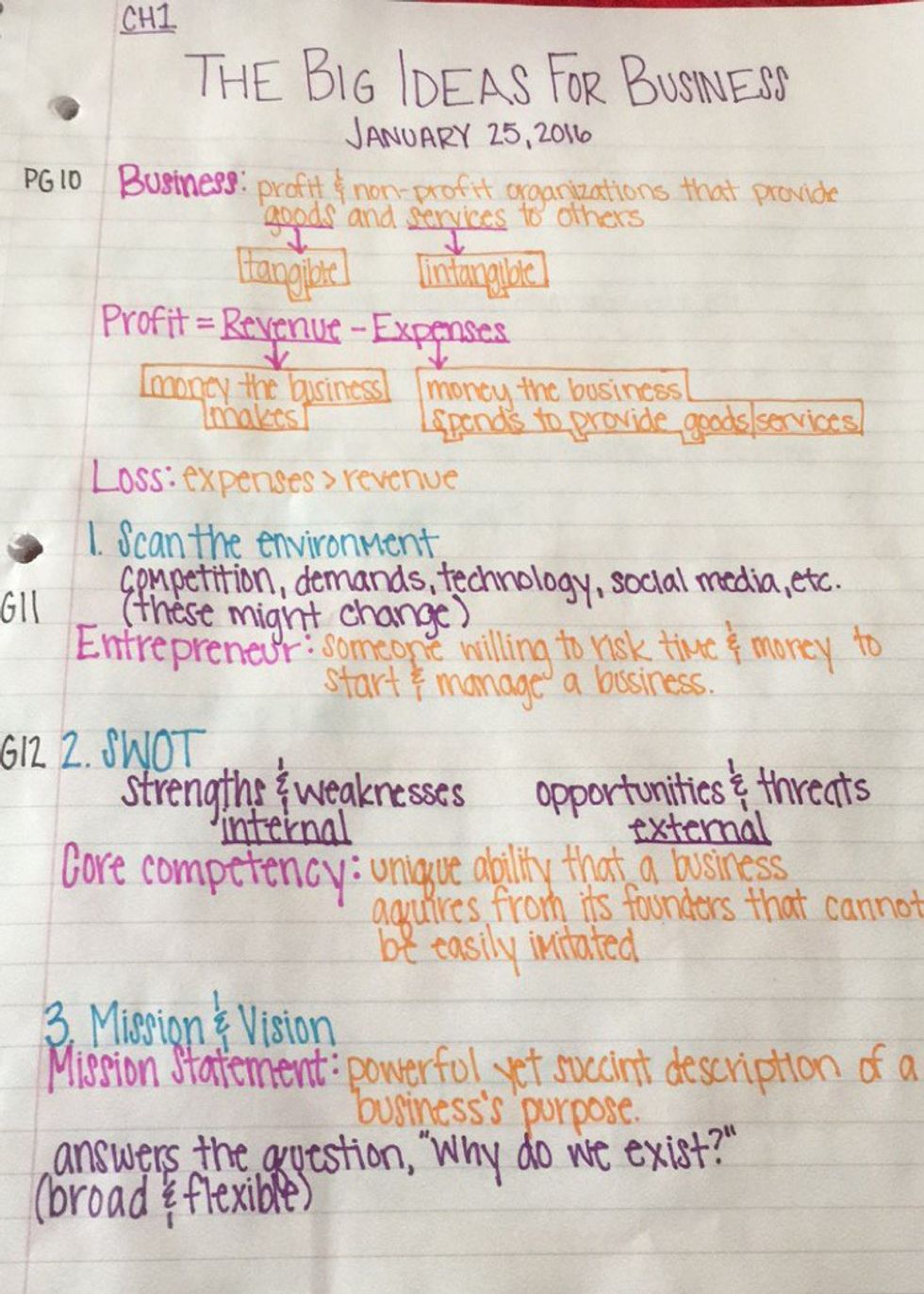School is back in session and notebooks or laptops have already started filling up with class notes. Everyone takes notes differently, just as everyone learns differently. I take my notes to the next level, but it makes studying for midterms and finals way easier.
When it comes to taking notes, I have OCD and want to have all the information I need. That isn't exactly the easiest during lectures, so how do I make it work? That's what I'm about to explain!
During lectures, I only use my laptop. If the professor doesn't allow laptops, I have a specific multi-subject spiral notebook that I use for those classes. These notes are extremely messy and full of abbreviations. That's all that matters, though. No one else needs to see these notes, so as long as you can read them, you are golden. Below is an example of this step in my note-taking process.
The next step to taking notes is rewriting them. This is the long, time-consuming part, but this is the same as going back over your notes and studying them. For this to be the most effective, this should be done within five hours of taking the rough draft of notes. Obviously, that isn't always possible, and that's perfectly okay. Don't wait too long, though. The notes start adding up, and it's not fun after that.
Anyways, for the rewriting part, you'll want five to six different colored pens. Color helps with remembering and organization. Those are the two main focuses in this style of note-taking. You will also want a notebook for each class. A multi-subject notebook is fine, but I find that there aren't as many pages for each subject.
I start by writing the chapter at the top of the page in the header (the big open part at the very top). It doesn't matter what color the chapter is. I tend to use black as that is normally my general use color. I also write the date(s) that we covered the chapter up there. Next, I just go in order of my rough draft notes. I use one color for headings, one color for sub-headings, one color for information within each sub-heading, and one color for vocabulary. BONUS: At the end of each chapter, I write a summary of what the chapter covered. I usually do this in black, but another color works as well! Just remember to keep your colors consistent so your brain doesn't get confused!
After I have fully written my notes, I refer to the book (if I have one) and write the page numbers for the chapter at the top. I also write the page number where the vocab word can be found in the left margin on the same line as the vocab word. This is all optional, especially since I don't always get the book for the class.
The picture below is a rough example of the notes rewritten. This was my first attempt, so the vocab is split into two colors. Two colors for vocab is fine, but I found myself not remembering as well as it all being one color. Too many colors can confuse the brain!
This note-taking style is time-consuming and a little over-the-top, but it is sure to help you learn the material! I know for a fact that it helped me last semester since I stopped doing it halfway through and noticed a change. Try it out and see if it works for you!
BONUS: Index cards for vocabulary are always a wonderful thing if the class is more focused on vocab rather than overall information!





















